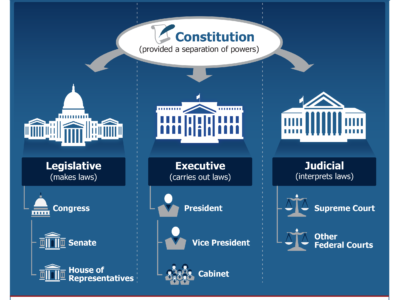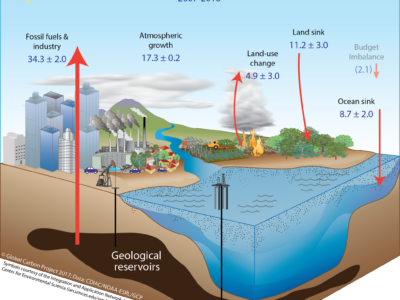International Environmental Law
Helping Repair Our Broken Governance System
Our institutions have been battered. How will we be able to fix them?
Much of Trump’s damage to the environment is obvious: his efforts to increase gas and oil production, his regulatory rollbacks, and his efforts to gut the agencies charged with protecting the environment. But he has also done deeper damage to the institutions we need to address climate change and other daunting environmental challenges. These problems …
Continue reading “Helping Repair Our Broken Governance System”
CONTINUE READINGGuest Bloggers Will Martin and Michael P. Vandenbergh: Can Private Environmental Governance Address Nationalism’s Threat To International Environmental Law?
As Some Nations Retreat From Internationalist Approaches to Transnational Environmental Challenges, Corporate Actions May Play a Larger Role
The withdrawal by Japan from the International Whaling Convention and its related Commission in December 2018 and the on-off threat by the new leader of Brazil to withdraw from the Paris Agreement on Climate Change are the latest signals that International Environmental Law (“IEL”) is under siege. The move by Japan and the possible withdrawal …
CONTINUE READINGThere Will Be No Global Environmental Constitution (at Least Not Now)
The proposed Global Pact for the Environment stumbles, as expected
In January, I asked in a blog post’s title “Will There Be a Global Environmental Constitution?” and wrote that “some observers are concerned that international environmental law remains insufficient in its scope, depth of commitments, and breadth of participation. Some legal scholars, activists, and others advocate for a comprehensive Global Pact for the Environment.” In …
Continue reading “There Will Be No Global Environmental Constitution (at Least Not Now)”
CONTINUE READINGOf War and the Environment
War and environmental disruption are like evil twins, often found together.
A Vietnam-era slogan proclaimed that “war is not healthy for children and other living things.” And war is indeed a danger to the environment. But perhaps less obviously, environmental disruption also makes wars more likely. The slogan was appropriate for its time. The U.S. deforestation campaign in Southeast Asia caused environmental harm on an unprecedented …
Continue reading “Of War and the Environment”
CONTINUE READINGGoverning New Biotechnologies for Biodiversity Conservation
The fourth in a series examines how international institutions have responded
The previous two posts in this series described how and why genetically modified organisms (GMOs) could be introduced into wild populations, either “typically” modified ones that would transmit their altered genes ineffectively or those with “gene drives” whose changes would quickly propagate through the entire population. In both cases, their potential applications include helping conserve …
Continue reading “Governing New Biotechnologies for Biodiversity Conservation”
CONTINUE READINGThe Governance of Solar Geoengineering: Managing Climate Change in the Anthropocene
My book is now available!
I interrupt my ongoing blog series on new biotechnologies and their governance (1, 2, 3) to announce that my book The Governance of Solar Geoengineering Managing: Climate Change in the Anthropocene is available today from Cambridge University Press. The brief description is: Climate change is among the world’s most important problems, and solutions based on …
CONTINUE READINGGenetically Modifying Wild Populations
The third in a series examines powerful new gene drive tools
In my previous two posts, I introduced what I call first, second, and third generation genetically modified organisms: (1) GM bacteria for diverse, mostly indoor purposes; (2) GM crops and agricultural animals; and (3) GMOs that would be intentionally placed into natural environments, where they would live, reproduce, and transmit their modified genes to offspring. …
Continue reading “Genetically Modifying Wild Populations”
CONTINUE READINGIn Defense of Live Carbon
Why Stopping Deforestation May be the Hardest and Most Important Part of the Climate Change Challenge
When contemplating the enormous challenge of global climate change, it is sometimes helpful to think about a simple model of the global carbon budget (see figure below). These admittedly reductionist schematics distinguish between sources, sinks, and reservoirs. Fossil hydrocarbons from the geological reservoir–call this dead carbon—are extracted and burned to generate energy, emitting vast amounts …
Continue reading “In Defense of Live Carbon”
CONTINUE READINGCould Genetically Modified Organisms Help Conserve Biodiversity?
The second in a series examines GMOs intentionally released into the wild
Last week, I introduced what I call “first generation” genetically modified organisms (GMOs) – altered bacteria for diverse, mostly indoor purposes – and “second generation” ones – GM crops and agricultural animals. Here, I describe third generation GMOs, which are those that would be intentionally placed into natural environments, where they would live, reproduce, and …
Continue reading “Could Genetically Modified Organisms Help Conserve Biodiversity?”
CONTINUE READINGGenetically Modified Organisms Return to the International Policy Agenda
This first in a series begins by looking back at GMOs and environmental law
Although the big news in international biodiversity this week was the release of the summary of the first global assessment from a relatively new UN-affiliated body, the topic of another report warrants attention as well. Yesterday the International Union for Conservation of Nature (IUCN) published its findings on “the potential positive and negative impacts of synthetic …
Continue reading “Genetically Modified Organisms Return to the International Policy Agenda”
CONTINUE READING












